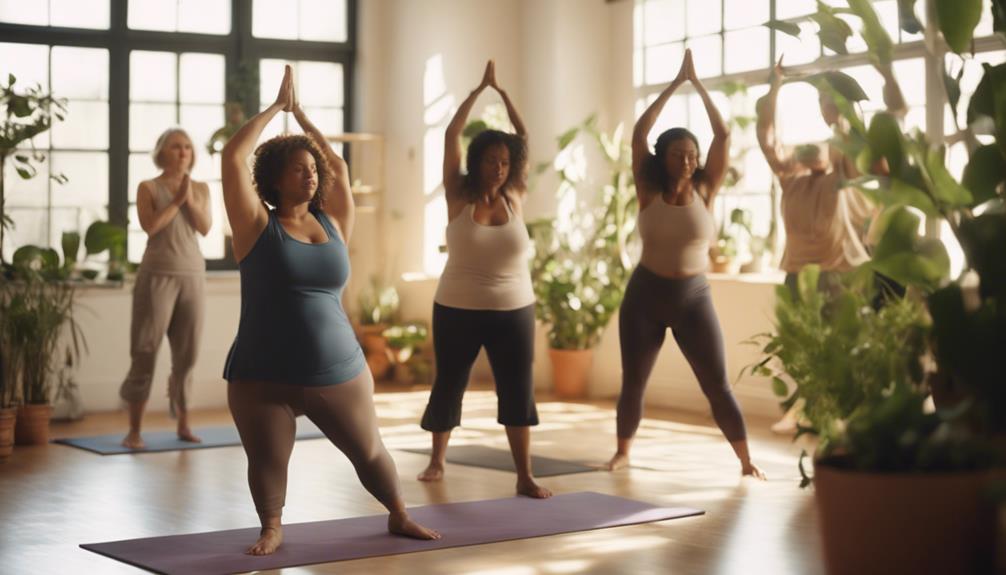How To Teach A Yoga Class

Teaching a yoga class can be a fulfilling endeavor, offering practitioners a chance to share their love of yoga while promoting physical and mental well-being. However, if you’re wondering how to teach a yoga class effectively, there are several key aspects to consider. This guide provides insights into everything from preparing your lesson plan to handling class dynamics and ensuring safety.
Understanding the Basics: What You Need to Know Before You Start
Before diving into how to teach a yoga class, it’s crucial to understand the foundational elements of yoga itself. Familiarity with various styles—such as Hatha, Vinyasa, Ashtanga, and Yin—will help you choose the right approach for your students. Additionally, knowing the anatomy of the body and common injuries will enable you to provide safe adjustments and guidance. If you’re new to yoga, consider taking classes from experienced instructors to gain insight into different teaching styles and techniques.
Creating a Structured Lesson Plan: The Backbone of Your Class
One of the most effective ways to teach a yoga class is by developing a structured lesson plan. Begin by deciding on the theme or focus of your class, whether it’s a specific posture, breathwork, or a particular intention. Allocate time for warm-up, the main sequence, and cool-down, ensuring a balanced flow. Incorporate variations for different skill levels, and always include modifications for students who may need them. A well-thought-out lesson plan not only keeps the class organized but also instills confidence in your teaching.
Setting the Right Atmosphere: Creating a Welcoming Space
The environment in which you teach can greatly impact the yoga experience for your students. Ensure the space is clean, well-lit, and free from distractions. Consider dim lighting, soothing music, or the use of essential oils to create a calming atmosphere. When you welcome your students, take a moment to introduce yourself and share your teaching style. Let them know what to expect, and encourage them to express any concerns or questions regarding their practice. A welcoming atmosphere fosters trust and connection, which are essential for a successful class.
Related Posts:
Communicating Effectively: The Art of Instruction
When learning how to teach a yoga class, effective communication is crucial. Use clear, concise language when cueing poses and transitions. Demonstrating postures can help students understand the alignment and flow better. Encourage students to listen to their bodies, reminding them to breathe and stay present. If you notice someone struggling, offer gentle reminders or suggest modifications to help them find comfort in the poses. Engaging with your students through positive reinforcement will build confidence and encourage them to deepen their practice.
Encouraging Mindfulness: Integrating Breathwork and Meditation
Incorporating mindfulness techniques into your yoga class can enhance the overall experience for your students. Teach them the importance of breath awareness, guiding them through pranayama exercises to center their minds and calm their spirits. Consider including a short meditation session at the beginning or end of the class to help students connect with their inner selves. By emphasizing mindfulness, you not only teach them how to practice yoga but also promote mental clarity and emotional well-being.
Adapting to Different Skill Levels: Inclusivity in Your Teaching
When you’re learning how to teach a yoga class, it’s important to recognize that students come with varying abilities and experiences. Be prepared to offer modifications for beginners and advanced options for more experienced practitioners. This inclusivity allows everyone to participate meaningfully, regardless of their skill level. Encourage students to work at their own pace and remind them that yoga is a personal journey. This approach not only enhances their experience but also fosters a sense of community within the class.
Handling Class Dynamics: Managing Group Energy and Challenges
As a yoga instructor, you’ll encounter diverse personalities and energies within your class. Being attuned to the group dynamics is essential for creating a harmonious environment. Pay attention to how students interact with one another and how they respond to your instructions. If you notice any disruptions or tensions, address them gently but firmly. Encourage open communication and foster a respectful atmosphere. Remember that your energy sets the tone for the class; maintaining a calm and positive demeanor will help guide your students into a focused state of mind.
Continuing Your Education: The Journey Doesn’t End Here
Teaching a yoga class is a continuous learning process. Stay updated with the latest trends, techniques, and research in the yoga community. Attend workshops, enroll in continuing education courses, and seek feedback from your students to enhance your teaching skills. Being open to growth not only benefits you as an instructor but also enriches the experience for your students. Remember that every class is an opportunity for exploration and connection, and committing to lifelong learning will only deepen your passion for yoga.
In conclusion, learning how to teach a yoga class involves a blend of knowledge, preparation, communication, and adaptability. By following the guidelines outlined in this post, you can create an enriching experience for your students, helping them connect with their bodies and minds. Embrace the journey of teaching, and remember that your passion for yoga can inspire others to embark on their own transformative paths.What Yoga Poses Help With BloatingKriya Yoga